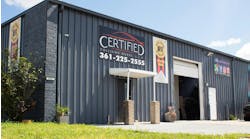At a recent industry meeting a very qualified structural technician was discussing how it has become almost impossible to receive an equitable payment to properly make structural repairs. After his comments soaked in, I realized that the possible poor management decisions and concessions our industry has been making during the last few decades were becoming painfully evident to the best of our industry, and is far down the path of destroying their entire existence.
In the past, it was important that our technicians were properly trained, the facility was equipped to properly restore the vehicle back to pre-accident condition and the repairs performed by these specialists had great industry respect. Today, they are quickly being minimized as a necessary element for the repairs. I have heard many variations of the following, but I still wonder how we have allowed this to happen, and it certainly is time to stop, call timeout and re-think our business strategy.First, many seem to forget (or never knew) why there are different labor rates for structural, frame and mechanical repairs compared to regular body/metal/refinish labor. The primary reason was, and still is, to allow for the major capital investments required to be properly equipped to repair the vehicles of the past, present and future.
This includes not only the equipment such as special adapters for anchoring, measuring and pulling, but also the new welding, brazing and even rivet bonding equipment necessary for structural/frame repairs. Mechanical rates also must be established to handle the continued specialized equipment for every new system that is added on vehicles. All these include the increased need for specialized training for the technicians on these new major investments and required processes. None of these things are free. They are costs of business that are going to keep increasing.
There also are additional costs driven by environmental, safety and volatile organic compound (VOC) emission regulations from federal, state, and local agencies. In many cases, these also require large capital investments to comply with, so even the standard body and refinishing rates need to be re-evaluated to include these costs.
How many times have you heard, "It's a cost of doing business?" Considering all the increased costs, you can see why these rates must be different and why they need to be continuously reconsidered. Today's pricing is far behind the increased requirements to operate a collision repair business. These increased costs should be reflected in your labor rates – that is Business 101. Otherwise, over time it will become painfully impossible to sustain a healthy and profitable collision repair business.
To compound this, it's been a constant challenge to ensure that the replacement and refinishing times listed in our estimating systems adequately reflect the actual time necessary to perform those operations. The support and usage of the Database Enhanced Gateway (DEG) at www.degweb.org is a must for all in the collision repair industry. Editor's note: Read DEG blogs at www.abrn.com/degart.
But even if the times are accurate, the rate that is to be applied to an operation should be based on the "specialized equipment and trained technician" that is required to perform the operation in the most efficient and correct process. How have we accepted without any valid documentation payment at a lower rate for the operation even though it requires specialized equipment and training?
Finally, how did our industry begin to accept maximum "hours" for any operation when there is no validity for these reductions? Has it simply been arbitrarily imposed? Who in his or her right mind can justify that if there is actually 12 hours of work on a vehicle that only eight will be paid for?
All these things have eroded the labor dollars that used to pay for almost everything, including expert technicians, estimators, managers, equipment and benefits. These are all "costs of doing business" and necessary. Unfortunately, unless we call a timeout and rethink our strategy, there won't be any technicians to call upon.
Contact info: [email protected]



